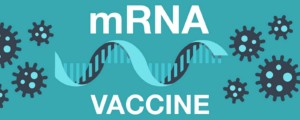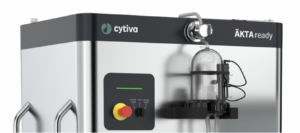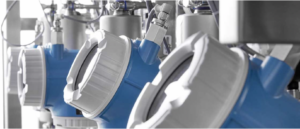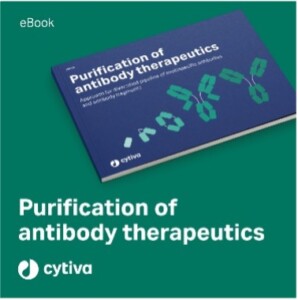
The Dish’s Weekly Biotechnology News Wrap Up – September 29, 2023
This week’s headlines include: Feds Investing Nearly $115 Million In Three New Cancer Technology Research Projects, Univercells expands into the United States with new offices in Andover, MA, Pfizer hooks up with Ginkgo for $331M biobucks deal on unspecified targets, FDA will continue to use remote inspection tools to assess pending applications, US CDC backs Pfizer’s maternal RSV vaccine to protect infants, Plan now for next pandemic, BIO’s Phyllis Arthur tells UN preparedness panel, and Japan approves Alzheimer’s treatment Leqembi by Eisai and Biogen.
Podcasts:
Check out our podcast channel. We have over 100 great podcasts covering drug discovery, stem cell culture, upstream and downstream biomanufacturing and more! Click below to download from iTunes or Google play:
In Case You Missed It, Recent Articles on Cell Culture Dish and Downstream Column:
![]()
The Unique Challenges of Lipid Nanoparticle Development and Manufacturing
 The use of lipid nanoparticles (LNPs) as non-viral delivery tools for messenger RNA (mRNA) helps alleviate the otherwise poor pharmacokinetics (PK) and in vivo instability of mRNA. However, LNP formulation development and manufacturing remains complex and challenging. LNPs directly impact the efficacy and safety of the drug and as such, improvements to the formulation during clinical trials require significant time and human studies. Large scale CGMP manufacturing is also difficult and requires improvements to standardization, scalability, and reproducibility as the industry expands use of mRNA technology to multiple therapeutic applications. In the following interview, Jingtao Zhang, Ph.D., Scientific Director at Catalent Biologics, answered some frequently asked questions about the challenges with lipid nanoparticle development and manufacturing…
The use of lipid nanoparticles (LNPs) as non-viral delivery tools for messenger RNA (mRNA) helps alleviate the otherwise poor pharmacokinetics (PK) and in vivo instability of mRNA. However, LNP formulation development and manufacturing remains complex and challenging. LNPs directly impact the efficacy and safety of the drug and as such, improvements to the formulation during clinical trials require significant time and human studies. Large scale CGMP manufacturing is also difficult and requires improvements to standardization, scalability, and reproducibility as the industry expands use of mRNA technology to multiple therapeutic applications. In the following interview, Jingtao Zhang, Ph.D., Scientific Director at Catalent Biologics, answered some frequently asked questions about the challenges with lipid nanoparticle development and manufacturing…
mRNA Development and Manufacturing: CMC Challenges and Solutions
 only meet these needs, but also improve existing manufacturing processes and efficiencies. Current challenges with mRNA development and manufacturing include a lack of standardization, supply chain challenges, difficulties scaling the process, and the complexity of the molecule itself. On the positive side, increased interest means that there will be more opportunities to refine best practices over time. In addition, more companies will be entering the space looking to provide solutions to these challenges in the form of fit-for-purpose equipment, improved process platforms, strengthened supply chains, and better understanding of the product itself. To address these requirements, Catalent is building additional GMP capability dedicated to mRNA processes. At the same time, we are continuing to offer integrated development and manufacturing capabilities for plasmid DNA, mRNA, lipid nanoparticles, fill finish, and clinical supply services as well as analytical testing and characterization capabilities for this complex modality. Jingtao Zhang, Ph.D., Scientific Director at Catalent Biologics, answered some frequently asked questions about the challenges associated with mRNA manufacturing and solutions to these issues…
only meet these needs, but also improve existing manufacturing processes and efficiencies. Current challenges with mRNA development and manufacturing include a lack of standardization, supply chain challenges, difficulties scaling the process, and the complexity of the molecule itself. On the positive side, increased interest means that there will be more opportunities to refine best practices over time. In addition, more companies will be entering the space looking to provide solutions to these challenges in the form of fit-for-purpose equipment, improved process platforms, strengthened supply chains, and better understanding of the product itself. To address these requirements, Catalent is building additional GMP capability dedicated to mRNA processes. At the same time, we are continuing to offer integrated development and manufacturing capabilities for plasmid DNA, mRNA, lipid nanoparticles, fill finish, and clinical supply services as well as analytical testing and characterization capabilities for this complex modality. Jingtao Zhang, Ph.D., Scientific Director at Catalent Biologics, answered some frequently asked questions about the challenges associated with mRNA manufacturing and solutions to these issues…Solving the solubility and stability challenges of L-cystine in culture media
 Successful biologics manufacturing requires streamlined, intensified cell culture processes that maximize productivity. Key to this goal is optimized media formulation, using high quality supplements at ideal concentrations. Amino acids are critical additions because they boost productivity and offer a host of other benefits. However, some of the inherent properties of these amino acids, create challenges when adding them to culture and can hinder intensification strategies and efforts to streamline bioprocesses. Low stability and solubility of some amino acids, particularly when added to cell culture media, can negatively impact media formulation, storage stability, process intensification and ultimately overall productivity. For example, L-cystine provides many benefits to cell culture, but exhibits low solubility at neutral pH and is at risk of precipitation at higher concentrations. Thus, these challenges with solubility and stability can limit amino acid bioavailability and result in suboptimal concentrations in bioreactor feeds or perfusion media, resulting in low-performing bioprocesses. To further complicate matters, existing mitigation strategies for amino acids increase cost, add extra processing steps, and extend culture time…
Successful biologics manufacturing requires streamlined, intensified cell culture processes that maximize productivity. Key to this goal is optimized media formulation, using high quality supplements at ideal concentrations. Amino acids are critical additions because they boost productivity and offer a host of other benefits. However, some of the inherent properties of these amino acids, create challenges when adding them to culture and can hinder intensification strategies and efforts to streamline bioprocesses. Low stability and solubility of some amino acids, particularly when added to cell culture media, can negatively impact media formulation, storage stability, process intensification and ultimately overall productivity. For example, L-cystine provides many benefits to cell culture, but exhibits low solubility at neutral pH and is at risk of precipitation at higher concentrations. Thus, these challenges with solubility and stability can limit amino acid bioavailability and result in suboptimal concentrations in bioreactor feeds or perfusion media, resulting in low-performing bioprocesses. To further complicate matters, existing mitigation strategies for amino acids increase cost, add extra processing steps, and extend culture time…
mRNA: A New Option for Vaccines and Therapies
The use of mRNA for vaccines and therapeutics is being explored due to the advantages that the technology presents, and the  promise of mRNA was demonstrated by COVID-19 vaccines, which provided a pathway for future therapeutics to employ this technology. The foremost advantage of the technology is that it can be rapidly developed and the manufacturing process for mRNA can be scaled up more quickly than other biologics. Wai Lam W. Ling, Ph.D., VP Scientific Advisory at Catalent Biologics, answered some frequently asked questions about mRNA and its use in vaccines and therapeutics…
promise of mRNA was demonstrated by COVID-19 vaccines, which provided a pathway for future therapeutics to employ this technology. The foremost advantage of the technology is that it can be rapidly developed and the manufacturing process for mRNA can be scaled up more quickly than other biologics. Wai Lam W. Ling, Ph.D., VP Scientific Advisory at Catalent Biologics, answered some frequently asked questions about mRNA and its use in vaccines and therapeutics…
 Next generation advanced medicines are being introduced through improvements in biopharmaceutical innovation, however, the duality of the industry is often overlooked. While the industry is credited with developing life-saving therapies such as advanced cell and gene therapies, it is also producing more greenhouse gas emissions than the automotive industry as an unintended consequence of its innovation and manufacturing processes. Additionally, supply chain challenges associated with decentralized manufacturing, temperature-sensitive products, and the prevalent usage of single-use consumables in around 85% of bioprocessing, (particularly in upstream processes like cell culture[1], cell separation, and harvest), can make change seem insurmountable. But if we take a step back and narrow our focus, transformation is readily achievable. Cell culture media with its plastic packaging and single-use vessels for processing is among the various factors that contribute to the eco-unfriendly nature of life sciences. As a critical raw material for both research and therapy development, the stage is set for a much-needed paradigm shift…
Next generation advanced medicines are being introduced through improvements in biopharmaceutical innovation, however, the duality of the industry is often overlooked. While the industry is credited with developing life-saving therapies such as advanced cell and gene therapies, it is also producing more greenhouse gas emissions than the automotive industry as an unintended consequence of its innovation and manufacturing processes. Additionally, supply chain challenges associated with decentralized manufacturing, temperature-sensitive products, and the prevalent usage of single-use consumables in around 85% of bioprocessing, (particularly in upstream processes like cell culture[1], cell separation, and harvest), can make change seem insurmountable. But if we take a step back and narrow our focus, transformation is readily achievable. Cell culture media with its plastic packaging and single-use vessels for processing is among the various factors that contribute to the eco-unfriendly nature of life sciences. As a critical raw material for both research and therapy development, the stage is set for a much-needed paradigm shift…
![]()
f(x) Columns for Mechanistic Chromatography Modeling
Mechanistic modeling is an approach that uses computer simulations based on known physiochemical phenomena to understand  and describe a variety of chromatographic modes. These simulations can effectively decrease the number of physical experiments that need to be performed during downstream process development to optimize parameters that can affect chromatographic performance. Advantages of mechanistic modeling include time savings, improved process understanding and robustness, and support of regulatory decision making…
and describe a variety of chromatographic modes. These simulations can effectively decrease the number of physical experiments that need to be performed during downstream process development to optimize parameters that can affect chromatographic performance. Advantages of mechanistic modeling include time savings, improved process understanding and robustness, and support of regulatory decision making…
ÄKTA ready™ Chromatography Systems from Cytiva
 In the current landscape of biopharmaceuticals, single-use technologies are being increasingly incorporated into bioprocessing workflows. They offer several benefits such as enhanced manufacturing flexibility, reduced risk of contamination, and decreased downtime that can streamline process scale-up and manufacturing. These benefits align with the goals of improving efficiency, product safety, and accelerating time-to-market for novel therapeutics while being adaptable to the evolving needs of the industry…
In the current landscape of biopharmaceuticals, single-use technologies are being increasingly incorporated into bioprocessing workflows. They offer several benefits such as enhanced manufacturing flexibility, reduced risk of contamination, and decreased downtime that can streamline process scale-up and manufacturing. These benefits align with the goals of improving efficiency, product safety, and accelerating time-to-market for novel therapeutics while being adaptable to the evolving needs of the industry…
Buffer formulation is an essential part of downstream bioprocessing to produce safe and effective biopharmaceuticals more  efficiently. Buffers are aqueous solutions with precise pH and ionic strength that can stabilize proteins, aid purification steps, as well as regulate enzymatic activity – and are essential to creating optimal conditions for various biochemical reactions. Specific buffer compositions are required throughout the downstream process, often in volumes that can reach thousands of liters…
efficiently. Buffers are aqueous solutions with precise pH and ionic strength that can stabilize proteins, aid purification steps, as well as regulate enzymatic activity – and are essential to creating optimal conditions for various biochemical reactions. Specific buffer compositions are required throughout the downstream process, often in volumes that can reach thousands of liters…
Cytiva MabSelect™ VL protein L affinity resin
 Monoclonal antibodies (mAbs) represent a rapidly growing class of therapeutics designed to target and bind to specific proteins to treat a variety of diseases, including cancer, autoimmune disorders, and infectious diseases. They can be custom engineered to have specific properties that suit specific therapeutic needs, such as increased potency, longer half-life in the body, or reduced immunogenicity. As the field continues to advance, the molecular diversity of mAbs is increasing rapidly, where non-traditional mAb formats such as bispecific antibodies, fragments, and antibody-drug conjugates now account for up to a quarter of projects in the clinical pipeline. Conventional purification protocols relying on protein A may not always be suitable for these novel antibody variants since they may require new ligands or base matrices for effective capture of target molecule and separation of impurities. Therefore, the development of chromatography resins that can accommodate these variants is crucial for manufacturing and process development in the evolving landscape of mAb therapeutics…
Monoclonal antibodies (mAbs) represent a rapidly growing class of therapeutics designed to target and bind to specific proteins to treat a variety of diseases, including cancer, autoimmune disorders, and infectious diseases. They can be custom engineered to have specific properties that suit specific therapeutic needs, such as increased potency, longer half-life in the body, or reduced immunogenicity. As the field continues to advance, the molecular diversity of mAbs is increasing rapidly, where non-traditional mAb formats such as bispecific antibodies, fragments, and antibody-drug conjugates now account for up to a quarter of projects in the clinical pipeline. Conventional purification protocols relying on protein A may not always be suitable for these novel antibody variants since they may require new ligands or base matrices for effective capture of target molecule and separation of impurities. Therefore, the development of chromatography resins that can accommodate these variants is crucial for manufacturing and process development in the evolving landscape of mAb therapeutics…
Cool Tool – GoSilico™ Chromatography Modeling Software from Cytiva
Biopharmaceutical manufacturers are continuously striving to find efficiencies and make improvements across downstream  processing steps to improve product quality, reduce costs, and accelerate the development of safe and effective biopharmaceuticals. Chromatography plays a critical role in the purification of biopharmaceutical products. However, developing chromatography processes can be a challenging task because it involves balancing factors such as selectivity, yield, and productivity while maintaining the purity and quality of the final product. Strategies for process development are evolving and include design of experiments (DoE) and high throughput process development (HTPD). These strategies accelerate process development and increase process understanding, but they require multiple experiments and extensive data analysis, which can be time consuming and resource intensive…
processing steps to improve product quality, reduce costs, and accelerate the development of safe and effective biopharmaceuticals. Chromatography plays a critical role in the purification of biopharmaceutical products. However, developing chromatography processes can be a challenging task because it involves balancing factors such as selectivity, yield, and productivity while maintaining the purity and quality of the final product. Strategies for process development are evolving and include design of experiments (DoE) and high throughput process development (HTPD). These strategies accelerate process development and increase process understanding, but they require multiple experiments and extensive data analysis, which can be time consuming and resource intensive…
eBook:
Purification of antibody therapeutics – DOWNLOAD EBOOK
 Approach for diversified pipeline of multispecific antibodies and antibody fragments
Approach for diversified pipeline of multispecific antibodies and antibody fragments
Antibody therapeutics are the largest class of biotherapeutics, and their development has been ongoing for decades. Over the years, development beyond traditional monoclonal antibodies (mAb) has increased, like multispecific and bispecific antibodies, antibody fragments, and antibody drug conjugates.
Manufacturing platform approaches conveniently used for many traditional mAbs are being adopted or tweaked to fit the respective molecule.
In the eBook Purification of antibody therapeutics, you will learn about considerations and tips for developing purification protocols for antibody variants.
eLearning Opportunity:
DESIGN OF EXPERIMENTS (DOE) FOR CHROMATOGRAPHY – TakE FREE E-LEARNING COURSES
Improve process development efficiency compared to studying one factor at a time (OFAT)
A Design of Experiments (DoE) model can be used to understand how experimental parameters affect outcomes. In  chromatography process development, a DoE approach can greatly improve the efficiency in screening for suitable experimental conditions, in optimizing a process, or in robustness testing.
chromatography process development, a DoE approach can greatly improve the efficiency in screening for suitable experimental conditions, in optimizing a process, or in robustness testing.
What is DoE?
Design of experiments (DoE) is a technique for planning experiments and analyzing the information obtained. The technique allows you to use a minimum number of experiments. You systematically vary several experimental parameters simultaneously to obtain sufficient information to create a mathematical model of the chromatography process.
Take one of the DoE eLearning courses from Cytiva
Explore the basic concepts of DoE, learn about the typical workflow, and get guidance on graph interpretation in the first course. Then see how to perform a DoE screening with UNICORN™ software to optimize conditions for high yield and protein purity.
Headlines:
“Feds Investing Nearly $115 Million In Three New Cancer Technology Research Projects,” Forbes
The federal government plans to invest almost $115 million in three university-based projects intended to discover new ways to detect and fight cancer. The three projects are funded under agreements with the Advanced Research Projects Agency for Health (ARPA-H), representing the Agency’s support of the Biden administration’s Cancer Moonshot agenda...
“Univercells expands into the United States with new offices in Andover, MA,” Univercells Press Release
Univercells, a Belgian biotechnology company dedicated to ensuring that everyone has access to biologics everywhere in the world, is pleased to announce the opening of the first United States (US) offices for the Group. Located in Andover, Massachusetts, the office is already up and running, and features a showroom with Ntensify™ mRNA production technologies from portfolio company, Quantoom Biosciences. A launch event is being held on the day of release, September 26, 2023, and the location will then be accessible to customers and prospects as of October 2023...
“Pfizer hooks up with Ginkgo for $331M biobucks deal on unspecified targets,” FierceBiotech
Ginkgo Bioworks has snared one of its biggest partners to date. The biology biotech will work with none other than Pfizer in a drug discovery deal for RNA medicines worth $331 million in biobucks for three programs...
“FDA will continue to use remote inspection tools to assess pending applications,” Regulatory Focus
The US Food and Drug Administration (FDA) issued a draft guidance on Thursday that formalizes its plans for using alternative tools to assess drug manufacturing facilities compliance with good manufacturing practices (GMPs) as it eases out of pandemic mode. The agency intends to build on the “success” of using these tools during the COVID-19 pandemic…
“US CDC backs Pfizer’s maternal RSV vaccine to protect infants,” Reuters
The U.S. Centers for Disease Control and Prevention (CDC) on Friday backed Pfizer’s (PFE.N) respiratory syncytial virus (RSV) vaccine for women in the middle of the third trimester of pregnancy to protect their babies from severe illness. The CDC recommendation comes after a panel of advisers voted 11 to 1 for use of the shot in women 32 weeks to 36 weeks into their pregnancy from September to January, paving the way for it to become the first maternal vaccine for the seasonal respiratory virus available in the country…
“Plan now for next pandemic, BIO’s Phyllis Arthur tells UN preparedness panel,” BioNews
We need to make progress against the next pandemic, Phyllis Arthur, Senior Vice President of Infectious Diseases & Emerging Science Policy at the Biotechnology Innovation Organization (BIO), told a Sept. 20 UN General Assembly panel on pandemic prevention, preparedness, and response. The panel was part of the high-level meeting on pandemic prevention, preparedness, and response at the UN General Assembly’s 78th session…
“Japan approves Alzheimer’s treatment Leqembi by Eisai and Biogen,” Reuters
Japan’s Eisai (4523.T) said on Monday its Alzheimer’s treatment developed with Biogen (BIIB.O), Leqembi, was approved by the country’s health ministry, making it the second nation after the United States to clear its use. It can now be used in Japan as a treatment for slowing progression of mild cognitive impairment and mild dementia due to Alzheimer’s disease…